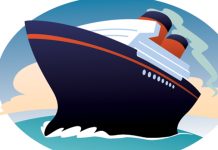Veteran’s Day Special
The following is an excerpt from “Santa Catalina Goes to War” by Bill White
In September of 1939 after Poland was invaded by German Troops, Britain and France declared war on Germany. With the onset of war in Europe, President Franklin Roosevelt and his military advisors laid the groundwork for the organization that would be known as the Office of Strategic Services (OSS).
Veteran’s Day Special
The following is an excerpt from “Santa Catalina Goes to War” by Bill White
In September of 1939 after Poland was invaded by German Troops, Britain and France declared war on Germany. With the onset of war in Europe, President Franklin Roosevelt and his military advisors laid the groundwork for the organization that would be known as the Office of Strategic Services (OSS).
The changing nature of warfare made these plans necessary. The oceans would no longer protect us from distant enemies. The OSS would specialize in surveillance, sabotage, and covert warfare under the direct command of the US Joint Chiefs of Staff.
Toyon Bay, two and a half miles northwest of Avalon, and a smaller cove nearby known as Gallagher’s Beach, were selected for the use of the OSS for several reasons.
The beaches at Toyon and Gallagher’s are hemmed in by steep mountains, and no road had yet been built into the area.
The isolation was ideal for the kind of training that would go on there. In addition, there were already several buildings in place at the bottom of Swain’s Canyon, inland from Toyon’s beach. The facilities had been used by the Catalina Island School for Boys before its closure in December of 1941.
Along with the military branches, the OSS geared up during 1942. The site at Toyon Bay was leased in December of 1943, and the training center began operations in June of 1944. The base was top secret. Most Merchant Marine, Coast Guard and Army personnel stationed at other Catalina locations knew nothing of its existence.
Men who trained at Toyon Bay became experts with many weapons including carbines, M-1 rifles, 45 caliber pistols, the Fairbairn-Skyes dagger and explosives.
They also trained in martial arts and methods of “silent killing”. Much of the training was applicable to jungle combat. The tough physical conditioning regimen included calisthenics on the beach and long runs up the mountains and along the ridges of Catalina Island.
Toyon Bay served as a super secret training area for American spies and guerrilla warfare specialists from 1943-1945. While on the Island the men learned survival, hand-to-hand combat with knives and other silent weapons, unarmed combat, demolitions, map reading, cryptography, and clandestine radio operations.
Each training class conducted mock raids on the US Coast Guard base at Two Harbors and other “enemy” targets all around the Island. Agents were landed by submarine and rubber boats at other “enemy-held” strongholds.
From Toyon Bay the trainees went to Burma and China where they did behind-the-lines intelligence work for British and Indian armies fighting to recapture Burma.
They recruited, trained and led a guerrilla force of native Kachin fighters whose exploits have never been equaled in the history of guerrilla warfare, and who were largely responsible for the opening of the Burma road to China, and retaking of Northern Burma.










